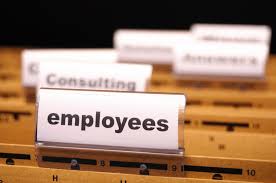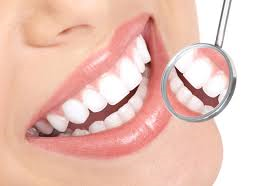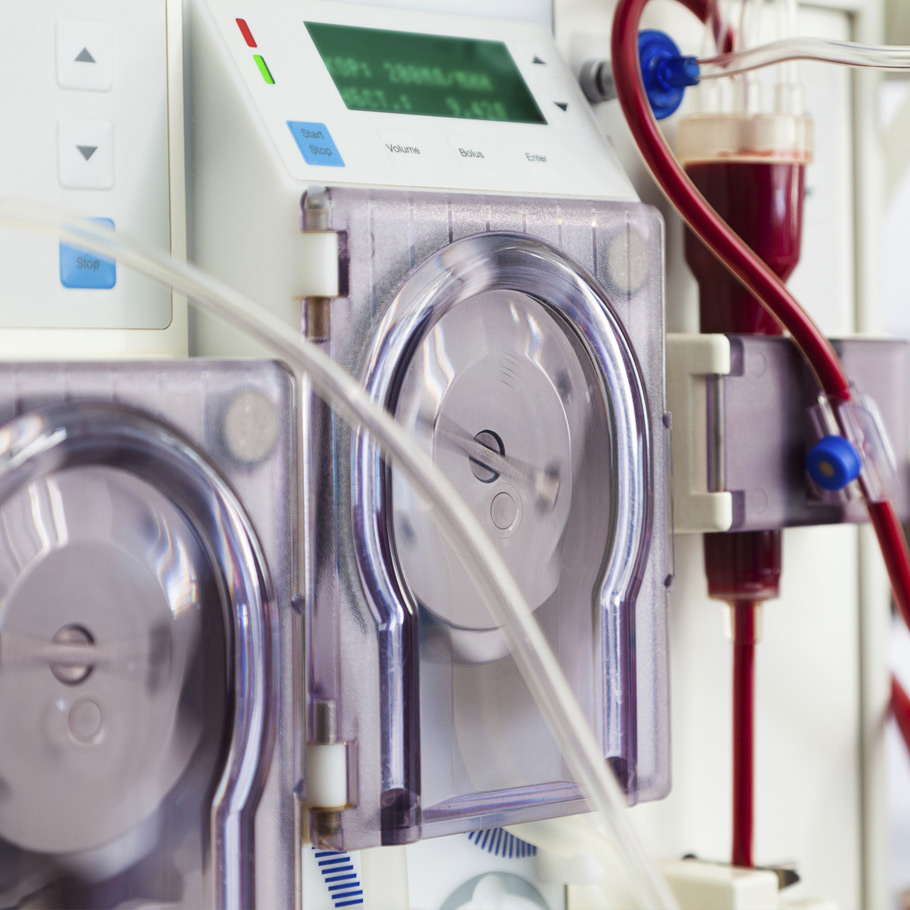Title Page
-
Conducted on
-
Prepared by
-
Location
-
Department
-
Unit
-
Department/Unit
-
Department/Unit:
-
Department/Unit:
-
Clinic:
-
This survey tool provides a focused review of the critical elements associated with the transmission of COVID-19, will help surveyors to prioritize survey activities while onsite, and identify those survey activities which can be accomplished offsite. These efficiencies will decrease the potential for transmission of COVID-19, as well as lessen disruptions to the facility and minimize exposure of the surveyor. Surveyors should be mindful to ensure their activities do not interfere with the active treatment or prevention of transmission of COVID-19. Entry and screening procedures as well as patient care guidance has varied over the progression of COVID-19 transmission in facilities. Facilities are expected to be in compliance with CMS guidance that is in effect at the time of the survey. Refer to QSO memos released at: https://www.cms.gov/Medicare/Provider-Enrollment-and-Certification/SurveyCertificationGenInfo/Policy-and-Memos-to-States-and-Regions. Content within this tool may be generally applied to any setting. However, CMS recognizes that not all acute and continuing care providers have the same acuity or capacity and therfore, depending upon the setting, not all information will be applicable on every survey (e.g.; aerosol generating procedures section). If citing for noncompliance related to COVID-19, the surveyor(s) must include the following language at the beginning of the Deficient Practice Statement or other place determined appropriate on the Form CMS-2567: “Based on [observations/interviews/record review], the facility failed to [properly prevent and/or contain – or other appropriate statement] COVID-19.” If surveyors see concerns related to compliance with other requirements, they should investigate them in accordance with guidance in the appropriate provider/supplier appendix of the State Operations Manual and related survey instructions. Surveyors may also need to consider investigating concerns related to Emergency Preparedness in accordance with the guidance in Appendix Z of the State Operations Manual (e.g., for emergency staffing). For purposes of this document, “staff” includes employees, consultants, contractors, volunteers, and others who provide care and services to patients on behalf of the facility. Additionally, the general term “facility” means inpatient, congregate settings, hospitals, intermediate care facilities for individuals with intellectual disabilities, dialysis facilities, and clinics, and “home” refers to settings such as hospice and home health where care is provided in the home.
Inspection / Audit
Entering the Facility/Triage/Registration/Visitor Handling Area(s)
-
Signage is posted at facility entrances with visitation restrictions and screening procedures.
-
Sings are posted at entrances with instructions to individuals seeking medical care with symptoms of respiratory infection to immediately put on a mask and keep it on during their assessment, cover their mouth/nose when coughing or sneezing, use and dispose of tissues, and perform hand hygiene after contact with respiratory secretions.
-
Staff are trained on appropriate processes (e.g., questions to ask and actions to take) to rapidly identify and isolate suspect COVID-19 cases.
-
There is a process that occurs after a suspected case is identified to include immediate notification of facility leadership/infection control.
-
Comments:
Visitation
-
The facility should have limited visitation.
-
Facilities are actively screening visitors (CDC currently recommends staff are checking for fever and signs and/or symptoms of respiratory infection, and other criteria such as travel or exposure to COVID-19).
-
Staff can define current screening criteria.
-
Permitted visitors are instructed to frequently perform hand hygiene; limit their interactions with others in the facility; restrict their visit to the patient’s room or other location designated by the facility; and offered personal protective equipment (PPE) as supply allows.
-
Comments:
Standard and Transmission-Based Precautions (TBPs)
-
CMS is aware that there is a scarcity of some supplies in certain areas of the country. State and Federal surveyors should not cite facilities for
not having certain supplies (e.g., PPE such as gowns, N95 respirators, surgical masks) if they are having difficulty obtaining these supplies for
reasons outside of their control. However, CMS does expect facilities to take actions to mitigate any resource shortages and show they are taking all appropriate steps to obtain the necessary supplies as soon as possible. For example, if there is a shortage of PPE (e.g., due to supplier(s) shortage which may be a regional or national issue), the facility should contact their healthcare coalition for assistance (https://www.phe.gov/Preparedness/planning/hpp/Pages/find-hc-coalition.aspx), follow national and/or local guidelines for optimizing their current supply or identify the next best option to care for patients. Among other practices, optimizing their current supply may mean prioritizing use of gowns based on risk of exposure to infectious organisms, blood or body fluids, splashes or sprays, high contact procedures, or aerosol generating procedures (AGPs), as well as possibly extending use of PPE (follow national and/or local guidelines). Current CDC guidance for healthcare professionals is located at: https://www.cdc.gov/coronavirus/2019-nCoV/hcp/index.html and healthcare facilities is located at: https://www.cdc.gov/coronavirus/2019-ncov/healthcare-facilities/index.html. Guidance on strategies for optimizing PPE supply is located at: https://www.cdc.gov/coronavirus/2019-ncov/hcp/ppe-strategy/index.html. If a surveyor believes a facility should be cited for not having or providing the necessary supplies, the State Agency should contact the CMS Regional Location. -
Staff are performing Respiratory hygiene/cough etiquette appropriately.
-
Staff are performing Environmental cleaning and disinfection appropriately.
-
Staff are performing Reprocessing of reusable patient medical equipment (i.e., cleaning and disinfection per device and disinfectant manufacturer’s instructions for use) appropriately.
-
Comments:
Hand Hygiene
-
Staff are performing hand hygiene when indicated?
-
Alcohol-based hand rub (ABHR), if available, is readily accessible and preferentially used by staff for hand hygiene.
-
Staff wash hands with soap and water when their hands are visibly soiled (e.g., blood, body fluids).
-
If there are shortages of ABHR, hand hygiene using soap and water is used instead.
-
Staff perform hand hygiene (even if gloves are used): Before and after contact with patients.
-
Staff perform hand hygiene (even if gloves are used): After contact with blood, body fluids, or visibly contaminated surfaces or other objects and surfaces in the care environment.
-
Staff perform hand hygiene (even if gloves are used): After removing personal protective equipment (e.g., gloves, gown, facemask).
-
Staff perform hand hygiene (even if gloves are used): Before performing a procedure such as an aseptic task (e.g., insertion of an invasive device such as a urinary catheter, manipulation of a central venous catheter, medication preparation, and/or dressing care).
-
Interviewed staff can state whether hand hygiene supplies are readily available and who they contact for replacement supplies.
-
Comments:
Personal Protective Equipment (PPE)
-
Staff appropriately use PPE including, but not limited to, the following: Gloves are worn if potential contact with blood or body fluid, mucous membranes, or non-intact skin.
-
Staff appropriately use PPE including, but not limited to, the following: Gloves are removed after contact with blood or body fluids, mucous membranes, or non-intact skin.
-
Staff appropriately use PPE including, but not limited to, the following: Gloves are changed and hand hygiene is performed before moving from a contaminated site to a clean site during care (body, equipment, etc).
-
Staff appropriately use PPE including, but not limited to, the following: An isolation gown is worn for direct patient contact if the patient has uncontained secretions or excretions.
-
Staff appropriately use PPE including, but not limited to, the following: A facemask, gloves, isolation gown, and eye protection are worn when caring for a patient with new acute cough or symptoms of an undiagnosed respiratory infection unless the suspected diagnosis requires airborne precautions (e.g., tuberculosis).
-
PPE use is extended/reused, is done according to national and/or local guidelines.
-
If it is reused, is it cleaned/decontaminated/maintained after and/or between uses.
-
There are sufficient PPE supplies available to follow infection prevention and control guidelines.
-
In the event of PPE shortages, there are procedures the facility takes to address the issue.
-
Staff know how to obtain PPE supplies before providing care.
-
Staff know who to contact for replacement supplies.
-
Comments:
Aerosol-Generating Procedures
-
Appropriate mouth, nose, clothing, gloves, and eye protection (e.g., N95 or higher-level respirator, if available; face shield, gowns) is worn for performing aerosol-generating and/or procedures that are likely to generate splashes or sprays of blood or body fluids and COVID-19 is suspected.
-
If procedures on patients with known or suspected COVID-19 are performed, the following occurs: Staff in the room should wear an N95 or higher-level respirator, eye protection, gloves, and a gown.
-
If procedures on patients with known or suspected COVID-19 are performed, the following occurs: The number of staff present during the procedure should be limited to only those essential for care and procedure support.
-
If procedures on patients with known or suspected COVID-19 are performed, the following occurs: AGPs should ideally take place in an airborne infection isolation room (AIIR). If an AIIR is not available and the procedure is medically necessary, then it should take place in a private room with the door closed.
-
If procedures on patients with known or suspected COVID-19 are performed, the following occurs: Clean and disinfect procedure room surfaces promptly as and with appropriate disinfectant. Use disinfectants on List N of the EPA website for EPA-registered disinfectants that have qualified under EPA’s emerging viral pathogens program for use against SARS-COV-2 or other national recommendations.
-
Comments:
Transmission-Based Precautions (TBPs)
-
Appropriate transmission-based precautions are implemented, including but not limited to: Signage on the patient’s room regarding need for transmission-based precautions.
-
Appropriate transmission-based precautions are implemented, including but not limited to: PPE use by staff (i.e., don gloves and gowns before contact with the patient and their care environment while on contact precautions; don facemask within three feet of a patient on droplet precautions; for facilities that use/have N-95 masks - don an fit-tested N95 or higher level respirator prior to room entry of a patient on airborne precautions).
-
Appropriate transmission-based precautions are implemented, including but not limited to: Dedicated or disposable noncritical patient-care equipment (e.g., blood pressure cuffs, blood glucose monitor equipment) are used, or if not available, then equipment is cleaned and disinfected according to manufacturers’ instructions using an EPA-registered disinfectant prior to use on another patient or before being returned to a common clean storage area.
-
Appropriate transmission-based precautions are implemented, including but not limited to: When transport or movement is medically-necessary outside of the patient room, the patient wears a facemask.
-
Appropriate transmission-based precautions are implemented, including but not limited to: Contaminated surfaces, objects and environmental surfaces that are touched frequently and in close proximity to the patient (e.g., bed rails, over-bed table, bathrooms) are cleaned and disinfected with an EPA-registered disinfectant for healthcare use (effective against the organism identified if known) at least daily and when visibly soiled.
-
Interviewed staff are aware of processes/protocols for transmission-based precautions and how staff is monitored for compliance.
-
Comments:
Standards, Policies and Procedures
-
The facility established a facility-wide IPCP including written standards, policies, and procedures that are current and based on national standards for undiagnosed respiratory illness and COVID-19.
-
The facility's policies or procedures include when to notify local/state public health officials if thee are clusters of respiratory illness or cases of COVID-19 that are identified or suspected.
-
Comments:
Infection Surveillance
-
The facility knows how many patients in the facility have been diagnosed with COVID-19 (suspected and confirmed).
-
The facility has established/implemented a surveillance plan, based on a facility assessment, for identifying, tracking, monitoring and/or reporting of fever, respiratory illness, or other signs/symptoms of COVID-19.
-
The plan includes early detection, management of a potentially infectious, symptomatic patient and the implementation of appropriate transmission-based precautions/PPE.
-
The facility has a process for communicating the diagnosis, treatment, and laboratory test results when transferring patients to an acute care hospital or other healthcare provider.
-
Can appropriate staff (e.g., nursing and leadership) identify/describe the communication protocol with local/state public health officials?
-
Infection control concerns are identified, reported and acted upon.
-
Comments:
Education, Monitoring, and Screening of Staff
-
There is evidence that the facility has educated staff on COVID-19 (e.g., symptoms, how it is transmitted, screening criteria, work exclusions).
-
The facility conveys updates on COVID-19 to all staff.
-
The facility is screening all staff at the beginning of their shift for fever and signs/symptoms of illness. (The facility is actively taking their temperatures and documenting absence of illness (or signs/symptoms of COVID-19 as more information becomes available).
-
If staff develop symptoms at work, the facility: has a process for staff to report their illness or developing symptoms.
-
If staff develop symptoms at work, the facility: places them in a facemask and have them return home for appropriate medical evaluation.
-
If staff develop symptoms at work, the facility: informs the facility’s infection preventionist and include information on individuals, equipment, and locations the person came in contact with.
-
If staff develop symptoms at work, the facility: Follows current guidance about returning to work (e.g., local health department, CDC: https://www.cdc.gov/coronavirus/2019-ncov/healthcare-facilities/hcp-return-work.html) .
-
Comments:
Emergency Preparedness - Staffing in Emergencies
-
Policy development: Does the facility have a policy and procedure for ensuring staffing to meet the needs of the patients when needed during an emergency, such as a COVID-19 outbreak?
-
Policy implementation: In an emergency, did the facility implement its planned strategy for ensuring staffing to meet the needs of the patient? (N/A if a emergency staff was not needed).
-
Comments:
Considerations Specifically for Surveys of Hospitals and Critical Access Hospitals
Patient Care (Hospital Tag A-0747, CAH Tag C-0278)
-
Is the facility restricting patients (to the extent possible) to their rooms except for medically necessary purposes? If patients have to leave their room, are they wearing a facemask, performing hand hygiene, limiting their movement in the facility, and performing social distancing (stay at least 6 feet away from others). If PPE shortage is an issue, facemasks should be limited to patients diagnosed with COVID-19 or has signs/symptoms of respiratory illness or COVID-19.
-
Has the facility isolated residents with known or suspected COVID-19 in a private room (if available), or taken other actions based on national (e.g., CDC), state, or local public health authority recommendations?
-
Comments:
Environmental Cleaning (Hospital Tag A-0747, CAH Tag C-0278)
-
During environmental cleaning procedures, personnel wear appropriate PPE to prevent exposure to infectious agents or chemicals (PPE can include gloves, gowns, masks, and eye protection)?
-
Environmental surfaces in patient care areas are cleaned and disinfected, using an EPA-registered disinfectant on a regular basis (e.g., daily), when spills occur and when surfaces are visibly contaminated? Use disinfectants on List N of the EPA website for EPA-registered disinfectants that have qualified under EPA’s emerging viral pathogens program for use against SARS-COV-2 or other national recommendations.
-
Cleaners and disinfectants, including disposable wipes, are used in accordance with manufacturer’s instructions (e.g., dilution, storage, shelf-life, contact time).
-
The hospital decontaminates spills of blood or other body fluids according to its policies and procedures, using appropriate EPA-registered hospital disinfectants?
-
Comments:















